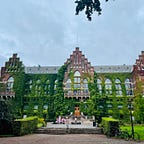Quetta Attack: An Outgrowth of Sectarian Conflict or a New Target of ISKP? | Geopolitical Monitor
Recently a suicide attack targeted the rally of a Sunni sectarian religious party, Ahle Sunnat Wal Jummat (ASWJ), in Quetta — a stark reminder of the scourge of suicide terrorism in Pakistan. Over the last two decades, suicide attacks — or human bombs — have been a familiar modus operandi of anti-state jihadist terrorist groups against a wide range of targets, such as government, foreigners, minorities, and even Islamist groups. The Quetta blast is unique in that ASWJ was targeted for the first time in such a suicide attack.
Who might be behind the attack? Shia terrorist groups or those who are frustrated at the ASWJ’s changing politics of the last few years? The investigation has not yielded anything in the public domain yet.
This short piece will look into possible potential actors behind this attack.
The first possibility, which quickly arises with any attack against ASWJ, is that it can be an outgrowth of sectarian violence. For years, Pakistan has remained a battlefield of sectarian Shia and Sunni terrorist groups. ASWJ’s parent organization — the Sipahi Sahaba Pakistan (SSP) was one of the founding parties of this conflict.
SSP was established in 1985 to counter the growing influence of Shia political groups in the country after the 1979 revolution in Iran. A group of violent extremist youths parted ways with SSP in 1996 and established a clandestine terrorist organization, Lashkar-e-Jhangvi (LeJ). LeJ, with support from SSP, perpetrated a brutal war with opposing Shia groups, which killed thousands of people on both sides. As per the typical pattern of these sectarian killings, Shia terrorist groups then attacked LeJ/ASWJ and their sympathizers in revenge for those killed from their own community.
In the recent past, Quetta also remained one of the brutal war theaters of LeJ within Pakistan. There the group has claimed killing hundreds of Shia people from the Hazara community. For this reason, Shia terrorist groups appear as the prime perpetrators of attacking ASWJ in Quetta; however, it is very unlikely in this case. Shia groups in Pakistan have never claimed a suicide attack in their history. They have used vehicle-borne improvised explosive devices (VBIED), but their familiar modus operandi has remained target killing.
The second possibility could be of the neo-LeJ actor, which developed during the rise of anti-state jihadist war in the country. Shortly after 9/11, LeJ scattered into various independent cells when its central command was severely damaged. Most of its cadres became new allies of Al Qaeda in Pakistan. This alliance developed the neo-LeJ group, which is now looking for more targets beyond the Shia sect. They played central roles in almost all anti-state jihadist attacks in Pakistan shortly after 9/11.
Some of LeJ´s members became outstanding leaders of the AQ-allied and affiliated groups in Pakistan, as well as AQ in the Indian Subcontinent (AQIS), and of the various factions of TTP. After the establishment of the so-called Islamic State branch in the AfPak region, Islamic State in Khorasan (ISKP), LeJ remnants quickly joined its ranks inspired by the brutal history of IS in Iraq against the Shia people.
On the other hand, its parent organization ASWJ started a political journey in the opposite direction to LeJ, which birthed vast differences between them. From a pure sectarian entity, ASWJ focused on emerging as a mainstream political party in the country. It became an open supporter of the state security agencies in the war against the anti-state jihadist terrorist groups.
The counter- terrorism actions of the state mostly targeted LeJ cadres or their fellow jihadists. These blows resulted in intense frustrations of LeJ members, which were directed against their mother organization.
The killings of some of the top LeJ leadership in allegedly fake encounters with security forces, especially the killing of Malik Ishaq and his men in 2015, worsened these relations. LeJ members and sympathizers accused ASWJ leadership of alleged roles in these killings. These alleged roles of ASWJ leadership makes the frustrated cadres of neo-LeJ the next potential suspects behind any suicide attack targeting ASWJ.
The possibility of neo-LeJ members using the AQIS or TTP platform against ASWJ is profoundly low. In the last few years, these groups have issued clear codes of conduct for their members strictly forbidding attacks against the religious-political parties of the country. Since then, neither have they claimed nor are they blamed for any such attack.
Excluding AQIS and TTP factions thus leaves ISKP as a prime suspect for any such attack against ASWJ. The possibility is further supported by looking at the recent targets of ISKP in Pakistan. The group does not have any specific borders while choosing its targets. Anyone is considered a legitimate target who does not accept its so-called Caliphate.
ISKP in Pakistan has mainly remained focused on soft targets in an attempt to dominate the diverse terrorist landscape of the country.
ISKP claims to have targeted shrines, mosques, religious seminaries, and gatherings of political parties through suicide attacks. The group has also claimed indiscriminate killings of the Hazara community people in Quetta, which only LeJ has targeted before.
Thus, ISKP’s attacks in Pakistan and its close relations with neo-LeJ cadres in Quetta make the group the prime suspect in the recent targeting of the ASWJ rally in Quetta.
We hope you enjoyed this free article
Become a member and get full access to:
- Intelligence reports delivered right to your inbox
- Analysis from our global network of experts
- Forecasting, graphs and mapping
Originally published at https://www.geopoliticalmonitor.com on March 26, 2020.
